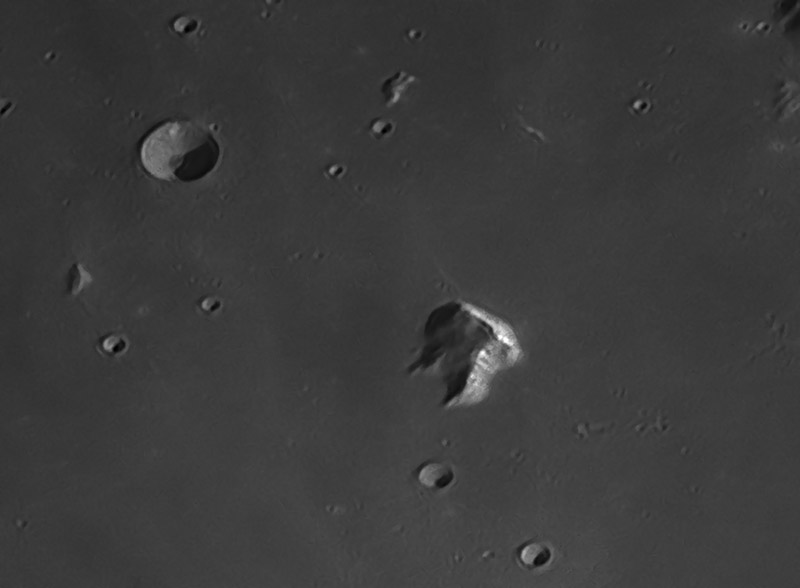Difference between revisions of "January 8, 2014"
(Created page with "__NOTOC__ == <!-- ws:start:WikiTextHeadingRule:0:<h1> --> <!-- ws:start:WikiTextLocalImageRule:6:<img src="/file/view/LPOD-Jan8-14.jpg/481209364/LPOD-Jan8-14...") |
|||
| Line 1: | Line 1: | ||
__NOTOC__ | __NOTOC__ | ||
| − | == | + | =Mount Molar= |
<!-- ws:start:WikiTextHeadingRule:0:<h1> --> | <!-- ws:start:WikiTextHeadingRule:0:<h1> --> | ||
Revision as of 22:43, 1 January 2015
Mount Molar
image by Leo Aerts, Belgium
With 13 km wide Piazzi Smyth as an almost flawless neighbor, Mt Piton looks like a stained tooth. Streaks of light and dark material visible on its flank suggest a new category of lunar feature: banded mountains. A closeup view provided by LRO/QuickMap shows the major dark and light streaks Leo captured plus additional thin ones. Like the steep rim of a crater wall these bands are due to light and dark material exposed near the crest of the peak that slip downslope. It may be that the dark bands are old material, darkened by space weathering, and the bright bands are more recently exposed material that will be darkened over time. One thing that we can be sure of is that splashes of impact melt didn't cause the dark streaks.
Chuck Wood
Technical Details
December 12, 2013, 18h44 UT. C14 + 2.5x power mate projection + red filter + dispersion corrector (camera, too),
Related Links
21st Century Atlas chart 19.
COMMENTS?
Click on this icon File:PostIcon.jpg at the upper right to post a comment.




